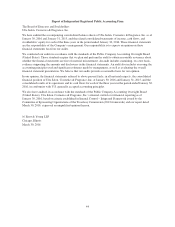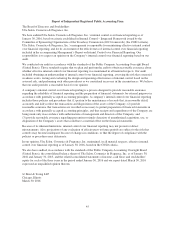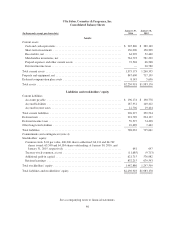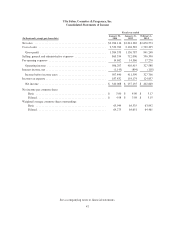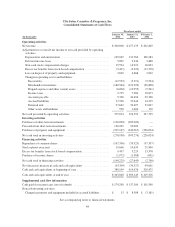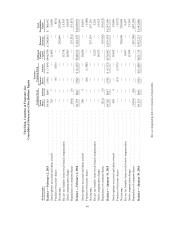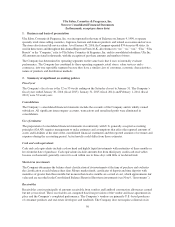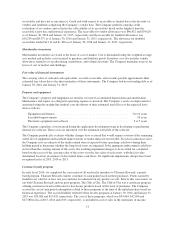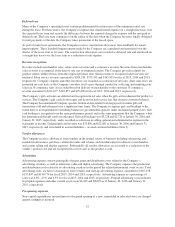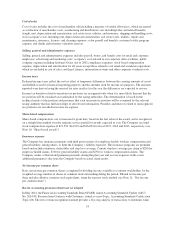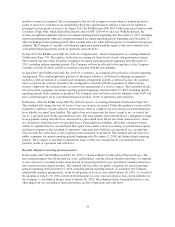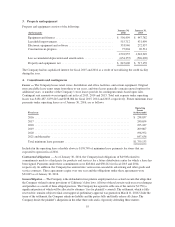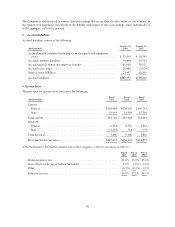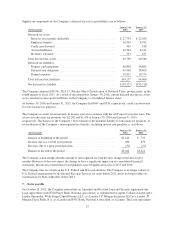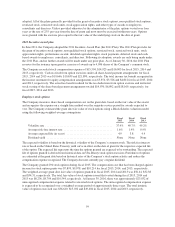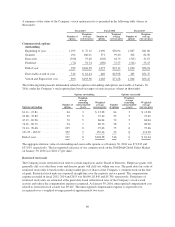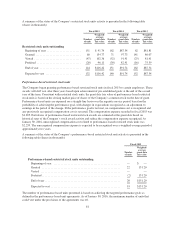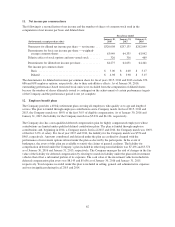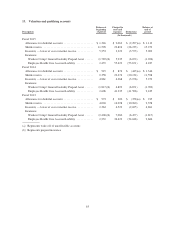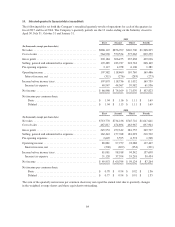Ulta 2015 Annual Report Download - page 60
Download and view the complete annual report
Please find page 60 of the 2015 Ulta annual report below. You can navigate through the pages in the report by either clicking on the pages listed below, or by using the keyword search tool below to find specific information within the annual report.and how revenue is recognized. The core principle is that we will recognize revenue when we transfer promised
goods or services to customers in an amount that reflects the consideration to which we expect to be entitled in
exchange for those goods or services. In August 2015, the FASB issued ASU 2015-14 Revenue from Contracts with
Customers (Topic 606), which delayed the effective date of ASU 2014-09 by one year. With the deferral, the
revenue recognition standard is effective for annual reporting periods beginning after December 15, 2017, including
interim reporting periods with early adoption permitted for annual reporting periods beginning after December 15,
2016, including interim reporting periods. This standard allows for either full retrospective or modified retrospective
adoption. The Company is currently evaluating the application method and the impact of this new standard on its
consolidated financial position, results of operations and cash flows.
In June 2014, the FASB issued ASU No. 2014-12, Compensation – Stock Compensation, Accounting Standards
Codification Topic 718. This update clarifies the accounting for share-based awards with performance targets.
The standard will take effect for public companies for annual reporting periods beginning after December 15,
2015, including interim reporting periods. The Company will not be affected by this guidance as the Company
currently accounts for these awards in a manner consistent with the new guidance.
In April 2015, the FASB issued ASU No. 2015-05, Customers’ Accounting for Fees Paid in a Cloud Computing
Arrangement. This standard provides guidance to determine whether a cloud-based computing arrangement
includes a software license. If a cloud-based computing arrangement includes a software license, the customer
must account for the software element of the arrangement consistent with the acquisition of other software
licenses. Otherwise, the customer must account for the arrangement as a service contract. The standard will take
effect for public companies for annual reporting periods beginning after December 15, 2015, including interim
reporting periods. Early adoption is permitted. The Company does not believe that the adoption of this ASU will
have a material impact on its consolidated financial position, results of operations and cash flows.
In February 2016, the FASB issued ASU No. 2016-02, Leases, Accounting Standards Codification Topic 842.
This standard will change the way all leases of one year or more are treated. Under this guidance, lessees will be
required to capitalize virtually all leases on the balance sheet as a right-of-use asset and an associated financing
lease liability or capital lease liability. The right-of-use asset represents the lessee’s right to use, or control the
use of, a specified asset for the specified lease term. The lease liability represents the lessee’s obligation to make
lease payments arising from the lease, measured on a discounted basis. Based on certain characteristics, leases
are classified as financing leases or operating leases. Financing lease liabilities, those that contain provisions
similar to capitalized leases, are amortized like capital leases under current accounting, as amortization expense
and interest expense in the statement of operations. Operating lease liabilities are amortized on a straight-line
basis over the life of the lease as lease expense in the statement of operations. The standard will take effect for
public companies for annual reporting periods beginning after December 15, 2018, including interim reporting
periods. The Company is currently evaluating the impact of this new standard on its consolidated financial
position, results of operations and cash flows.
Recently adopted accounting pronouncements
In November 2015, the FASB issued ASU No. 2015-17, Balance Sheet Classification of Deferred Taxes. The
new standard requires that all deferred tax assets and liabilities, and any related valuation allowance, be reported
as non-current in a classified balance sheet instead of separating deferred taxes and related valuation allowances
into current and non-current amounts. The standard will take effect for public companies for annual reporting
periods beginning after December 15, 2016, including interim reporting periods. As permitted, the Company
adopted this standard, prospectively, in the fourth quarter of its fiscal year ended January 30, 2016. As a result of
the adoption at January 30, 2016, current deferred income tax assets were classified as non-current liabilities on
the Company’s consolidated balance sheet at January 30, 2016. The adoption of this standard did not have any
other impact on our consolidated financial position, results of operations and cash flows.
54


